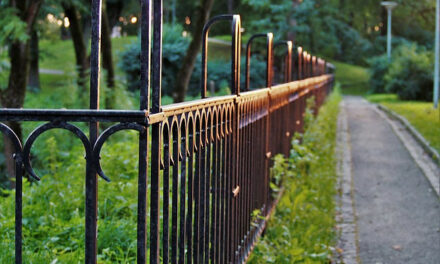Just like the majority of tourists, palm trees prefer a warmer climate, to the point they’ve become a signature of tropical vacations. Therefore, it’s important to explore that thin line that palm trees and investment properties share. Is it worth planting a palm tree in the garden of your investment property? Or, if it’s already there, is it better to remove that palm tree or to leave it? If you choose to remove it, can it be sold for some extra money? How to Sell a Palm Tree?
Answers to all these questions, and more, can be found in this article.
We’ll start off with the general definition of palm trees, what they are and how to take care of them. Some of the most common types of palm trees will be named here, and if you’re intrigued by the name and wish to plant one in your backyard, look up their photos, I guarantee they’re beautiful.
Next, we’ll be answering some more serious questions. After defining what an investment property is, we’ll focus on the value palm trees might add to the property, if they do. If not, we’ll explore scenarios in which property investors and developers
might profit more by removing the palm tree from the property.
When it comes to removing them, we’ll talk about when to sell a palm tree and how much profit you can expect from selling them, as well as where and how to find a buyer. If that is what interests you, and considering you’ve clicked on a palm tree-related article, it does, read on.
So, what is a palm tree?
What Is A Palm Tree?
When I say the word palm tree, what was the first thing on your mind; a song or a tree? Only one is correct.
If you’ve thought about the song, you’re correct, which suggests there is no such thing as a palm tree. Because palm trees aren’t trees at all. They’re actually a type of grass.
Palm trees belong to the Arecaceae family of perennial flowering plants that can grow to be climbers, shrubs, tree-like and stemless plants, all of which we call palms.
They commonly grow in the tropical climate and are the symbol of vacation to the rest of the world residing in the colder climate. As they were providers of food, they also symbolize peace, fertility, and victory in many cultures. Not to forget the Biblical meaning of the palm as well.
When in their home climate, palm trees aren’t hard to take care of. They will grow there on their own, just like every other type of grass. In a colder climate, though, they’ll need some help if you’re so determined to have one of these gorgeous plants in your garden, or inside your home.
First of all, it’s important to choose the right type of palm tree. Cabbage palm and Chinese fan palm can survive temperatures as low as to 15 degrees Fahrenheit (-9 °C).
The key to a healthy palm tree is preparation. Add sulfur to the soil with too much alkaline, add organic nutrients to a large surface since palm tree rots will spread and should have access to nutrients every step of the way. Do not bury the trunk into the soil, but make sure to water the root before filling the hole not to cause rotting.
Palm trees should have sufficient water until fully grown, so, initially, the water cost would be high. Once they’re grown, they require very basic maintenance. Like that, they can outlive you, with some living more than 100 years.
Types Of Palm Trees
When you say you’ll be speaking about the types of palm trees, it’s a very wide term, for there are more than 202 currently known genera and more than 2,500 different palm tree species in the world.
They can be divided into groups according to numerous criteria:
- size,
- leaf and trunk structure,
- cold tolerance,
- soil and salt tolerance,
- their fruit production and
- so much more.
For the purpose of this article, we’ll divide them into 7 categories and then name the most typical and common ones from each category.
1. Small Palm Trees, also known as Dwarf Palms or Miniature Palms.
They don’t grow taller than 20ft and are also quite slow-growing.
The 5 most popular are below:
- European fan palm, also known as Mediterranean Fan Palm.
- Bottle palm native to Mascarene Islands.
- Lipstick palm, also known as Sealing Wax Palm, named after the red crown shaft extending the leaf stem.
- Sweet or Jelly palm, native to Brazil and known for its tasty fruits.
- Pygmy Date Palm.
2. Fast-growing Palm Trees, which can grow at a rate of 2.5 feet per year.
Bear in mind that growth rate has many different factors, as with any other plant.
The top five highest growing palm trees are:
- Carpentaria palm, native to Australia, that can grow up to 3 ft a year,
- Foxtail palm also native to Australia but growing more popular each year,
- Majesty Palm Tree,
- Mexican Fan Palm, also known as Washington Palm and
- Skyduster, native to Mexico as the name suggests, also known as Cocos Plumosa, and Jeriva Syagrus romanzoffiana, very resistible and fast-growing palm tree with a growing rate of 3.5 ft. per year, both of which are reasons it’s slowly growing on popularity as well.
3. Cold tolerant palm trees, or Cold Hardy Palms.
Two of the species we’ve already mentioned in the previous section with the explanation why. Here are three more:
- Bismarck Palm, resistible not only to cold but also drought, which makes it the perfect palm tree for your back yard.
- Another adaptable palm tree to both cold weather and drought is California Fan Palm, and
- The same goes for the Needle Palm, also known as Porcupine Palm.
4. Fruit producing palm trees.
They produce fruit that can be either consumed raw or prepared.
Some of them include:
- The True Date Palm, which produces orange fruits called dates that are commonly used to produce ice-creams, syrups and alcoholic drinks.
- And alongside that one, the most known palm tree, not only in this category but overall is Coconut palm known for the coconut product we all know and love (some more than the others).
5. Drought tolerant palm trees.
They are very durable and adaptable to more tropical climatess and are the most common ones seen while on vacation.
Three types have already been mentioned in the above bulletpoint, so here are two more:
- The Areca Palm, native to Madagascar, adaptable to hot climates and all kinds of soils.
- The Sylvester Date Palm that not only tolerates hot tropical climates but is also good with colder ones.
6. Salt tolerant palms
They are once again highly popular by the salty seacoast, and therefore are commonly seen on vacations.
Top five include:
- Buccaneer Palm,
- Babbage Palm, also known as Sabal palm, the most popular palm in the United States,
- Old Man Palm,
- Saw Palmetto Palm that can easily listen in each of the named categories, and lastly
- Spindle Palm.
7. Indoor palms
They are adaptable and thus easy to keep in a pot in your living room.
The top 5 most popular ones include:
- Areca palm, the most popular one.
- Bamboo palm
that’s adaptable to low lights, low humidity and poor soil. - Kentia Palm native to Australia, equally as popular as the first one and equally as adaptable as the second one.
- Ponytail Palm, the one easiest to maintain.
- And lastly, Sago Palm that’s not even a palm but sure looks like one.
Why Would A Developer Need To Get Rid Of A Palm Tree?
Even though they are a good decoration, perhaps keeping a palm tree in the backyard of your investment property might not be the best idea.
Here are a few reasons why:
- Some palm trees, including the most popular Cocos palm tree, hold bacteria in their spikes that can be quite harmful. You do not want that around your tenants.
- Their roots are strong and can get quite deep, destroying pipes in the process. They’re hard to destroy and workaround.
- The drop fonds don’t decompose, meaning they’ll make a large mess that will take a lot of your time to clean up.
Their fruits can also be quite messy and a hassle to clean up, not to mention a safety hazard for the lawn. And to the world – considering palm trees do not decompose.
- Rats, possums, and snakes might find shelter within the palm trees, which you might not want at your investment property as it will just chase away potential tenants.
- Considering they aren’t built to provide either shade or wood, they appear useless. Not counting the little decorative moment, which is also clearly a debatable advantage.
When Can You Sell A Palm Tree?
But why would you just destroy a palm tree? Why not make a profit out of it and sell it?
But how?
First of all, your palm tree probably won’t cost much. More about that in the next section. Most palm trees aren’t worth much. You’ll be able to gain profit only if you sell a rare palm tree. After all, they’re easily bought every step of the way.
What makes your palm tree special?
Selling small palms in a pot is easy. However, if you have a large palm tree that’s already deeply rooted into your garden, selling it will be tricky. And, even if you find a buyer for that palm tree, it’ll be tricky digging it out of the soil it’s already rooted in.
We’ve already elaborated on how strong palm tree roots are and how much space they take up, meaning that the majority of palm trees die when dug up as it’s impossible to dig them up without cutting the roots. So, if you want to try that, make sure you can price your palm tree well and find a buyer beforehand.
Start off by determining what species your palm tree is. Do this before trying to market is, and definitely before you try to dig it up.
Chances are, it’s some common species that won’t land you a fortune. Though, you might get lucky and discover you’ve been cultivating a gem in your backyard. Determine that by either googling or asking an expert.
If you do find a buyer, make sure the palm tree is accessible. If you’ve managed to sell the palm, chances are the buyer wants to make a profit out of it too, and large digging costs and risk locations (e.g. next to a fence, driveway
or house) will generally put them off.
When pricing your palm, be realistic. Chances are, the buyer can find that same palm just down the line from you, so if you want that little profit, make sure it’s realistic.
Start off by searching the internet and find the most common price among the competition and price it something in the middle.
How Much A Fully Grown Palm Tree Worth?
We’ve established palm trees don’t have a large commercial value simply because they’re so common. This section will dig deeper into the possible prices, but before we do that, let’s explore the possibility of palm trees adding value to the property.
If they don’t have much value on their own, they might have some as a part of something bigger, right?
The good news is that they do. The bad news, however, is that it does matter which type the tree is. However, as plausible it may sound that fruit trees or palm trees may add more value to the property than some other tree type, that isn’t true. However, they do add value.
In theory, well-kept trees as a part of the well-kept landscape can raise the property’s value; well-maintained landscape up to 11 per cent and just trees by an average of $7,000
As for the cost of an individual palm tree, we’ve established in the previous section that their cost and the ability to sell depend on their rarity. Once again, we’ll look at different types of palm trees and determine what their cost would be.
Chinese Palms are typically indoor palms due to the fact they don’t grow up too tall even fully mature. They cost $100.
Similar to Chinese Palms, Australian native Kentia Palms are also a short type of palm that goes for about $200-$1,000 fully grown.
Parlor Palms, another popular indoor palm, go for $40-$150.
Pygmy palms that can grow either tall or short depending on the environment go for $80-$100.
Fishtail Palms, best grown in tropical climates, go for $100-$500.
Sentry palm, popular in malls, will go for $300-$800, depending on quality.
Huge Needle Palms that aren’t the most suitable for coastlines go $50-$200.
Diamond palms, commonly found in rainforests but can be grown at home as well with decent care, never go for under $100.
Unique Bottle Palms for your backyard go for $50-$100.
How To Find A Buyer For Your Palm Tree?
If you’ve gone through all the reasons to get rid of your palm tree, you’ve evaluated its worth and are ready to sell it. Then the last thing you’ve got to do is find a buyer. I repeat once again, do not try to dig up your palm tree before you find a buyer.
The easiest way to find a buyer is online. There are so many online selling and buying sites (e.g. eBay, GumTree) where you can just snap a photo of your palm tree and wait until someone contacts you.
More advanced ways include advertisement, which can make the palm disappear quicker. But why opt for an expensive option when you can try with a free one? Especially considering your palm tree won’t bring much profit back.
In the analysis from the previous section, we’ve seen that you’ll rarely get more than $1,000 on a fully grown palm tree.
On the other hand, another option other than the depth of the internet is finding a buyer in real life. There are advertisements again, perhaps you know someone who’d like a palm tree, or you can always visit a fair with your potted palm.
Conclusion
The most educational moment of this article was the fact that palm trees aren’t even trees, right? They actually trees belong to the Arecaceae family of flowering plants, so they’re basically large-scale grass.
While they’re mostly linked to the tropical climate, posing as the symbol of vacation and summer, different types that can withstand mediate climate and temperatures below -9 °C.
In the second section, the longest section, we’ve divided palm trees into seven sub-categories and named a few species for each. That was important because in order to sell your palm tree, you’ll need to know the type. We’ve established that only rare palm trees will bring you some kind of profit, and we’ve also analyzed the usual commercial value of different types of palms, the majority going for $100-$500.
This means, selling a palm tree won’t bring much income, but might cost more if you spend money on advertisements while searching for buyers.
Even digging up a fully grown palm tree might prove itself a costly hassle due to its strong roots. Taking all of that into consideration, owning a palm tree might not even be such a good idea. Why not just demolish it with the help of a professional arborist? We’ve given quite a few reasons why palm trees are, in fact, bad.





